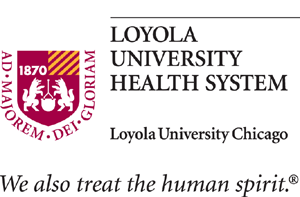Abdominal Colpopexy: Comparison of Endoscopic Surgical Strategies
| Status: | Archived |
|---|---|
| Conditions: | Women's Studies |
| Therapuetic Areas: | Reproductive |
| Healthy: | No |
| Age Range: | Any |
| Updated: | 7/1/2011 |
| Start Date: | January 2010 |
| End Date: | January 2012 |
The purpose of this research is to determine if there is a difference in total costs of care
and return to health in women who undergo a laparoscopic abdominal sacrocolpopexy
(ASC)compared to those undergoing the same procedure with the assistance of a robot.
Both traditional laparoscopic and robotic assisted laparoscopic approaches have been found
to result in shorter hospital stays, decreased blood loss and similar surgical outcomes as
compared to open abdominal surgery. The decision to use robotic assistance is typically
based on surgeon preference and robot availability. Thje investigators don't know if the
decision to use robotic assistance at the time of laparoscopic sacrocolpopexy is a benefit
for the patient. The investigators will compare the outcomes of cost, quality of life, and
return to work for women who undergo a laparoscopic sacrocolpopexy utilizing the robot to
those using traditional laparoscopic techniques.
This research study is designed to compare the total costs and treatment success of these
two surgical techniques. In addition, the investigators also will compare outcomes of
post-operative pain, quality of life, sexual function, return to normal activities and
satisfaction with treatment outcome.
Approximately one in ten women undergoes surgery for prolapse or incontinence in her
lifetime. Of these, up to thirty percent require a re-operation for recurrence of their
prolapse or incontinence symptoms. It has been estimated one in nine women will undergo a
hysterectomy in her lifetime, and up to 10% of these women will require surgery for
symptomatic vaginal vault prolapse. The search for the ideal repair for pelvic organ
prolapse has led to the invention of several approaches to this problem.
Abdominal sacrocolpopexy (ASC) with synthetic mesh is considered the gold standard in the
surgical management of pelvic organ prolapse with anatomic success rates ranging from 90 to
100% (Brubaker L, Guiahi M). Randomized comparative effectiveness trials and systematic
literature reviews demonstrated the anatomic superiority of open ASC compared to vaginal
sacrospinous ligament suspension.
Although ASC has the highest anatomic success rates for correcting apical prolapse, it is
traditionally done via a laparotomy requiring an abdominal incision. Open technique is
associated with more frequent short-term complications, including gastrointestinal (Benson
JT, Whitehead W).
Minimally invasive approaches to ASC using laparoscopy or robotic assisted laparoscopy
demonstrate shorter hospital stays, decreased blood loss, and similar short-term anatomic
outcomes when compared to open ASC (Geller E, Tarr M, Paiso M). Increasing numbers of
surgeons and patients choose minimally invasive ASC to maximize the benefits of abdominally
placed mesh and the shorter-recovery associated with minimally invasive surgery. Few
studies have compared laparoscopy to robotic assisted-laparoscopy in pelvic reconstructive
surgery.
Like many techniques in pelvic surgery, trends in the management of pelvic organ prolapse
continue to evolve. Unfortunately, such trends are not supported by level I data,
specifically that provided by randomized clinical trials. Although robotic technology is
new and rapidly spreading throughout the urologic and gynecologic communities, there are no
randomized trials comparing outcomes of robotic to more traditional laparoscopic techniques
for reconstructive pelvic surgery. Retrospective series indicate comparable efficacy with
respect to cure of prolapse. However, to date is it unknown how robotic surgery compares to
laparoscopic techniques with respect to cost, patient safety, pain, and ability to return to
normal activities.
The use of the robot in laparoscopic surgery is costly. The costs of purchasing a robot has
been estimated at $1.5 million dollars with annual maintenance costs of $112,0007. In
addition, additional costs exist for the robotic equipment utilized with each case. It is
arguable that the maintenance and operative equipment costs may overshadow any potential
savings in length of hospital stay and patient convalescence. However, if robotic
sacrocolpopexy can provide better immediate quality of life, less pain, and faster recovery
compared to laparoscopic techniques, the investment in robotic techniques may very well be
cost effective when a societal perspective is taken.
We found this trial at
2
sites
Click here to add this to my saved trials
10833 Le Conte Ave
Los Angeles, California 90095
Los Angeles, California 90095
(310) 825-4321

David Geffen School of Medicine, UCLA In 2002 Mr. David Geffen announced a $200 million...
Click here to add this to my saved trials
